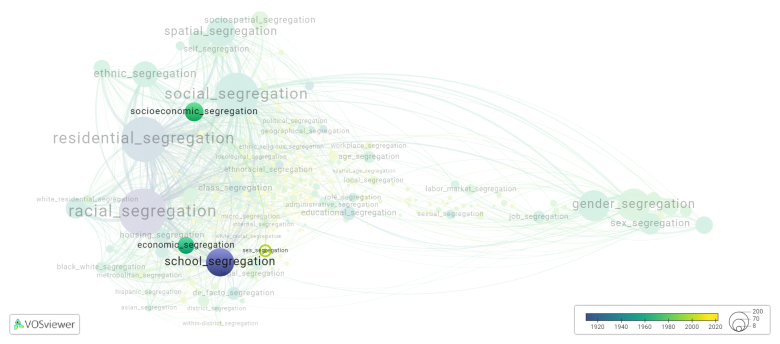Ses segregation
Date and country of first publication[1]
2008
United States
Definition
Segregation refers to the enforced separation of different groups of people based on their race, religion, ethnicity, or other characteristics. It typically involves the division of spaces such as neighborhoods, schools, hospitals, and public facilities, creating separate and unequal living conditions for marginalized groups. Historically, segregation has been used as a tool of discrimination and oppression, often perpetuating social, economic, and educational inequalities. While many countries have made efforts to eliminate segregation and promote integration, various forms of segregation still persist in different parts of the world.
See also
Related segregation forms
Ses segregation is frequently discussed in the literature with the following segregation forms:
school segregation, socioeconomic segregation, racial segregation, economic segregation, neighborhood segregation, school racial segregation, school socioeconomic segregation, poverty segregation

Visualization based on the research
For the complete network of associated segregation forms, see:
- First year of publication https://tinyurl.com/2235lkhw
- Louvain clusters https://tinyurl.com/2d8wg5n3
- Betweenness centrality https://tinyurl.com/223udk5r
- Disciplines where segregation forms first appeared https://tinyurl.com/244d8unz
References
Notes
- ↑ Date and country of first publication as informed by the Scopus database (December 2023).
At its current state, this definition has been generated by a Large Language Model (LLM) so far without review by an independent researcher or a member of the curating team of segregation experts that keep the Segregation Wiki online. While we strive for accuracy, we cannot guarantee its reliability, completeness and timeliness. Please use this content with caution and verify information as needed. Also, feel free to improve on the definition as you see fit, including the use of references and other informational resources. We value your input in enhancing the quality and accuracy of the definitions of segregation forms collectively offered in the Segregation Wiki ©.
Ses segregation appears in the following literature
Vigdor J.L., Ludwig J. (2008). Segregation and the test score gap. Steady Gains and Stalled Progress: Inequality and The Black-White Test Score Gap, 181-211. Russell Sage Foundation.https://doi.org/
Sharp G., Iceland J. (2013). The residential segregation patterns of whites by socioeconomic status, 2000 2011. Social Science Research, 42(4), 1046-1060. https://doi.org/10.1016/j.ssresearch.2013.03.007
Valenzuela J.P., Bellei C., de los Ríos D. (2014). Socioeconomic school segregation in a market oriented educational system. The case of Chile. Journal of Education Policy, 29(2), 217-241. https://doi.org/10.1080/02680939.2013.806995
Gorard S. (2014). The link between Academies in England, pupil outcomes and local patterns of socio economic segregation between schools. Research Papers in Education, 29(3), 268-284. Routledge.https://doi.org/10.1080/02671522.2014.885726
Gorard S. (2014). The link between Academies in England, pupil outcomes and local patterns of socio economic segregation between schools. Research Papers in Education, 29(3), 268-284. Routledge.https://doi.org/10.1080/02671522.2014.885726
Gorard S. (2016). The complex determinants of school intake characteristics and segregation, England 1989 to 2014. Cambridge Journal of Education, 46(1), 131-146. Routledge.https://doi.org/10.1080/0305764X.2015.1045446
Zhao T., Xu Y. (2022). Participation or eschewal? Final year secondary school students’ attitudes towards participation in higher education in Cameroon. South African Journal of Education, 42(4), -. South African Journal Of Education.https://doi.org/10.15700/saje.v42n4a2126
Sevilla M.P., Polesel J. (2022). Vocational education and social inequalities in within and between school curriculum tracking. Compare, 52(4), 581-599. Routledge.https://doi.org/10.1080/03057925.2020.1798214
